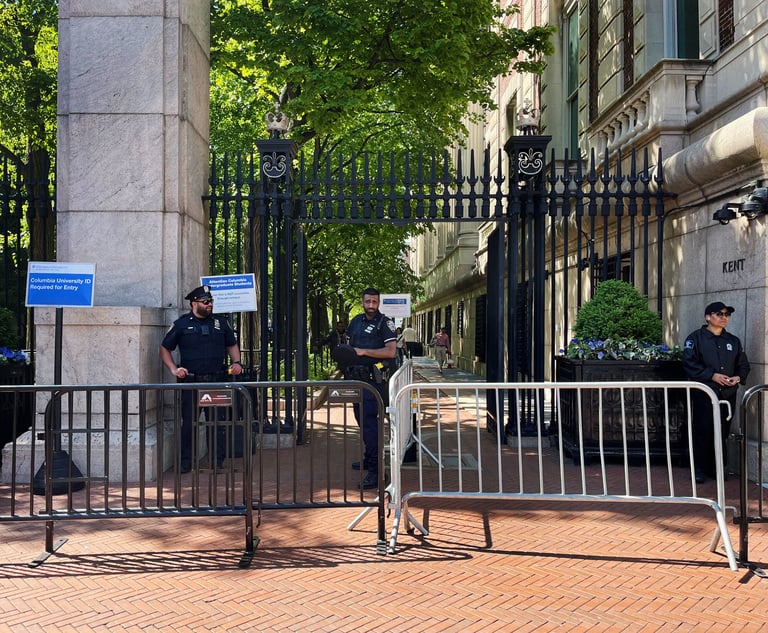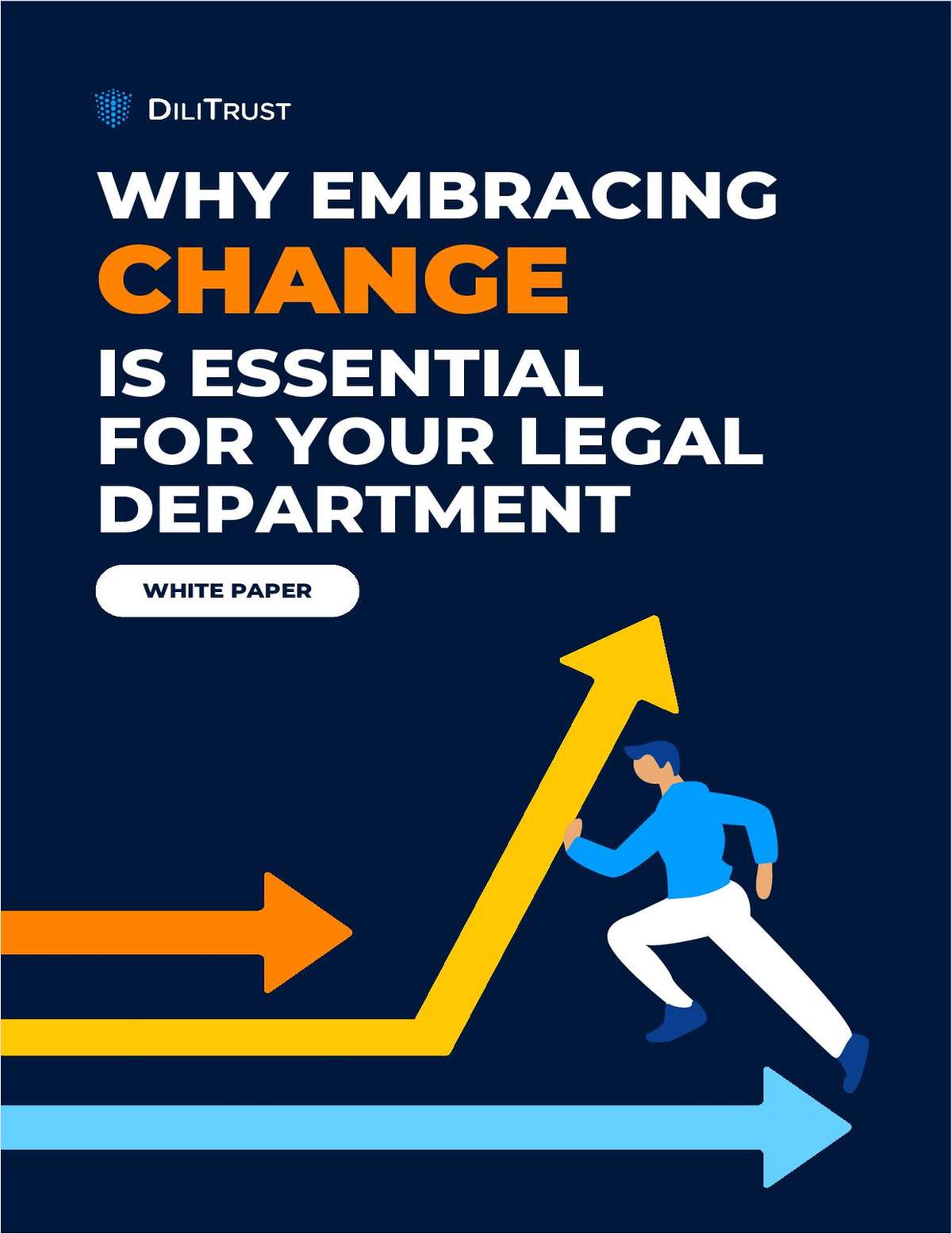Ahead of the Curve: Cracking the Case of Law School Cost
This week's Ahead of Curve hits up the American Bar Association's annual meeting for an in-depth discussion on why a J.D. costs so much and how to reduce law student debt.
August 13, 2019 at 12:55 PM
8 minute read
Welcome back to Ahead of the Curve. I’m Karen Sloan, legal education editor at Law.com, and I’ll be your host for this weekly look at innovation and notable developments in legal education.
This week I’m breaking down a day-long session on reducing law school costs held last week at the American Bar Association’s annual meeting. Law School Transparency’s Kyle McEntee shared his plan for creating competition to the U.S. News & World Report rankings; a trio of deans explained why a law degree costs so darn much; and a series of experts on tech, higher education financing, and diversity in the profession shared their thoughts on making a J.D. more affordable.
|
Solving the Law School Cost Conundrum
Here’s the million-dollar question on my mind today: How do you make a law degree more affordable?
That was the focus on a day-long session I attended last week on bringing down the cost of a legal education held at the American Bar Association’s Annual Meeting in San Francisco. It was an interesting—and at times frustrating—discussion, so I’m going to devote this newsletter to parsing some of the ideas that emerged. But first a little background: The session, dubbed, “Uncomfortable Conversations About Legal Education Student Debt, Diversity, and More” was a collaboration of the ABA’s Young Lawyers Division, the Young Lawyers Division of the Iowa State Bar Association, and Law School Transparency. The panels included law school deans, young lawyers, technology specialists, and student loan experts (and yours truly) discussing why law school costs so much and what can be done to make a J.D. more affordable. One impetus for the discussion is the launch of Law School Transparency’s Blue Sky Initiative, which aims to find solutions to the structural barriers that prevent law schools from reducing student costs.
Here are some quick facts to set the stage, courtesy of Law School Transparency:
➤➤The average law school graduate has $133,000 in law school debt—which requires 35 percent of the average discretionary income to service.
➤➤Tuition at private law schools has increased 273% since 1985, and hit $46,329 in the 2017-18 school year. Once scholarships are taken into account, students at private law schools paid an average $29,323 in tuition in 2018.
➤➤White law students are more likely to receive merit scholarships than black and Latino students, meaning they graduate with less debt.
The session kicked off with an interesting panel on the obstacles to lowering law school costs featuring three law deans: Carla Pratt of Washburn University School of Law, Camille Nelson of American University Washington College of Law, and Ben Barros of University of Toledo College of Law. More than anything else, this panel really illustrates what reformers are up against, because the reasons that a legal education is so pricey are pretty entrenched.
Barros outlined how human and consumer behavior work to undermine efforts to lower costs. Put another way, the reason listed tuitions keep rising is that people perceive more expensive things as more valuable, and the legal industry is obsessed with prestige. Law schools continue to raise list tuitions so that when they offer merit scholarships, those students perceive that they are getting a great deal. Next up was Nelson detailing how the highly influential U.S. News & World Report rankings incentivize schools to increase their spending rather than rein in costs. Finally, Pratt discussed how program standards set forth by the ABA and state supreme courts drive up the costs of legal education, while taxpayer support to public law schools has been in decline. In short—there are some strong headwinds when it comes to lowering costs.
That said, a series of shorter, “lighting round” talks provided some good insight.
➤➤John Mayer, the executive director of Center for Computer-Assisted Legal Instruction discussed how open-source casebook can save millions of dollars. (You can read more about this idea here.)
➤➤Barry Cynamon, CFO at Better Future Forward Inc.—a quasi-student loan lender—discussed the benefits of income share agreements as a way to reduce student costs. Income share agreements are alternatives to traditional student loans, in which lenders and educational institutions agree to cover student costs with repayment based on a certain percentage of the graduate’s income.
➤➤Former ABA President Paulette Brown discussed how the high cost of legal education is constraining the diversification of the legal profession.
The U.S. News rankings loomed large in the day’s conversation, and Law School Transparency Executive Director Kyle McEntee tackled it head on with a talk about how the rankings can be improved and their influence curbed. He proposed a change to the rankings formula that would do away with the expenditure-per-student metric, which rewards schools for spending money. In its place, he proposed an alternative measure that would divide the total amount of J.D. revenue a school receives annually by the number of long-term, fulltime bar passage required or J.D. advantage jobs its graduates land. This would essentially reward schools for keeping tuition low while also sending graduates on to good legal jobs.
McEntee also made news when he announced that in 2020 Law School Transparency will launch its own law school certification system, which is intended to create some competition for U.S. News in terms of evaluating the quality of law schools. It will award badges to law schools that meet its criteria in different areas, such as affordability and diversity and inclusion. The badges will offer schools alternative benchmarks that don’t hinge solely on the U.S. News formula, McEntee said. Law schools can then use the LST badges in their marketing materials and websites as a signifier of quality, along the lines of LEED certification for energy efficient construction. He said law deans are hungry for alternatives to the U.S. News rankings because they feel very constrained by those rankings’ narrow definition of what makes a good law school and the perverse incentives they create, such as the need to devote funds to merit scholarships at the expense of need-based ones.
My thoughts: Hats off Law School Transparency and the various Young Lawyers Divisions for taking the cost issue head on. This is one of those topics that has been a source of discussion for a long time among legal educators—especially when the applicant pool shrunk by more than a third earlier this decade—but until now I never had a sense that anyone was willing to take the lead here and push for real, meaningful change. Because talk isn’t going to get the job done.
Here’s the rub, though. It was evident to me during the discussion that not everyone is comfortable with the big picture ideas that the organizers had hoped to get people thinking about—particularly those within legal education.Jerry Anderson, dean of Drake University Law School, explained how his school had looked at income share agreements as a potential way to reduce student debt and concluded that they simply aren’t viable right now. It would require a $30 million upfront investment by the school to offer such agreements to its students—with no profits for nine years. But the real problem is that the economics don’t work for law students. A grad who lands a high-paying law firm job would end up paying far more under an income share agreement than under a traditional student loan. A grad in a lower-paying job would benefit, but the economics only work when you have both low and high earners in the system. I applaud Drake for even considering income share agreements, but I think the school’s conclusion illustrates just how complex the cost picture is and how tricky it will be to find solutions that make a perceptible difference in student costs.
On a final note, it’s also clear to me that quite a few legal educators associate efforts to reduce student costs with also reducing the quality of legal education. That’s a pretty serious obstacle to overcome. The way I see it, faculty and the various stakeholders involved in legal education need to buy into the idea that law school can cost less while also serving as the gatekeeper into the profession if there is ever to be progress made.
|
Extra Credit Reading
A federal judge has dismissed a lawsuit that claimed the Harvard Law Review discriminates against white men. A nearly identical suit brought by the same plaintiffs against the NYU Law Review is pending.
Will online law school courses feed graduates into the realm of “virtual law?”
This Vanderbilt Law School grad is trying to launch a bar association specifically for law students and lawyers who have found themselves on the wrong side of the law. Together, they aim to support criminal justice reform.
Thanks for reading Ahead of the Curve. Sign up for the newsletter and check out past issues here.
I’ll be back next week with more news and updates on the future of legal education. Until then, keep in touch at [email protected]
This content has been archived. It is available through our partners, LexisNexis® and Bloomberg Law.
To view this content, please continue to their sites.
Not a Lexis Subscriber?
Subscribe Now
Not a Bloomberg Law Subscriber?
Subscribe Now
NOT FOR REPRINT
© 2024 ALM Global, LLC, All Rights Reserved. Request academic re-use from www.copyright.com. All other uses, submit a request to [email protected]. For more information visit Asset & Logo Licensing.
You Might Like
View All



Trending Stories
Who Got The Work
Michael G. Bongiorno, Andrew Scott Dulberg and Elizabeth E. Driscoll from Wilmer Cutler Pickering Hale and Dorr have stepped in to represent Symbotic Inc., an A.I.-enabled technology platform that focuses on increasing supply chain efficiency, and other defendants in a pending shareholder derivative lawsuit. The case, filed Oct. 2 in Massachusetts District Court by the Brown Law Firm on behalf of Stephen Austen, accuses certain officers and directors of misleading investors in regard to Symbotic's potential for margin growth by failing to disclose that the company was not equipped to timely deploy its systems or manage expenses through project delays. The case, assigned to U.S. District Judge Nathaniel M. Gorton, is 1:24-cv-12522, Austen v. Cohen et al.
Who Got The Work
Edmund Polubinski and Marie Killmond of Davis Polk & Wardwell have entered appearances for data platform software development company MongoDB and other defendants in a pending shareholder derivative lawsuit. The action, filed Oct. 7 in New York Southern District Court by the Brown Law Firm, accuses the company's directors and/or officers of falsely expressing confidence in the company’s restructuring of its sales incentive plan and downplaying the severity of decreases in its upfront commitments. The case is 1:24-cv-07594, Roy v. Ittycheria et al.
Who Got The Work
Amy O. Bruchs and Kurt F. Ellison of Michael Best & Friedrich have entered appearances for Epic Systems Corp. in a pending employment discrimination lawsuit. The suit was filed Sept. 7 in Wisconsin Western District Court by Levine Eisberner LLC and Siri & Glimstad on behalf of a project manager who claims that he was wrongfully terminated after applying for a religious exemption to the defendant's COVID-19 vaccine mandate. The case, assigned to U.S. Magistrate Judge Anita Marie Boor, is 3:24-cv-00630, Secker, Nathan v. Epic Systems Corporation.
Who Got The Work
David X. Sullivan, Thomas J. Finn and Gregory A. Hall from McCarter & English have entered appearances for Sunrun Installation Services in a pending civil rights lawsuit. The complaint was filed Sept. 4 in Connecticut District Court by attorney Robert M. Berke on behalf of former employee George Edward Steins, who was arrested and charged with employing an unregistered home improvement salesperson. The complaint alleges that had Sunrun informed the Connecticut Department of Consumer Protection that the plaintiff's employment had ended in 2017 and that he no longer held Sunrun's home improvement contractor license, he would not have been hit with charges, which were dismissed in May 2024. The case, assigned to U.S. District Judge Jeffrey A. Meyer, is 3:24-cv-01423, Steins v. Sunrun, Inc. et al.
Who Got The Work
Greenberg Traurig shareholder Joshua L. Raskin has entered an appearance for boohoo.com UK Ltd. in a pending patent infringement lawsuit. The suit, filed Sept. 3 in Texas Eastern District Court by Rozier Hardt McDonough on behalf of Alto Dynamics, asserts five patents related to an online shopping platform. The case, assigned to U.S. District Judge Rodney Gilstrap, is 2:24-cv-00719, Alto Dynamics, LLC v. boohoo.com UK Limited.
Featured Firms
Law Offices of Gary Martin Hays & Associates, P.C.
(470) 294-1674
Law Offices of Mark E. Salomone
(857) 444-6468
Smith & Hassler
(713) 739-1250









